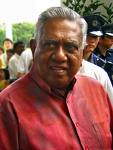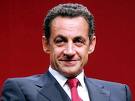Google Adsense, program affiliasi untuk bisnis internet yang sangat popular di dunia online saat ini. Semua orang bisa berpartisipasi menjadi pengiklan bagi google dengan syarat mudah dan cepat, cukup dengan menempatkan iklan-iklan google di situs mereka. Dengan metode komisi pay per click (PPC), menghasilkan uang dari google metodenya jauh lebih sederhana dan sangat liquid, beda dengan affiilasi lainnya, yang mengharuskan kita menjual sesuatu baru mendapatkan komisi. Google Adsense telah membawa revolusi baru dalam bisnis internet, pogram ini telah menghasilkan jutawan online tanpa harus mencari investor-investor besar seperti yang biasa dilakukan perusahaan-perusahaan dot com dari Silicon valley.
Apa itu Google Adwords dan Google Adsense,
Sebelum mengenal lebih juga tentang Google Adsense, sedikit terlebih dahulu akan diulas Google Adwords yang merupakan cikal bakal kelahiran Google Adsense. Google Adwords adalah program periklanan yang ditawarkan google kepada para pemilik situs yang ingin mempromosikan situsnya, dengan cara menampilkan link situs pengiklan di hasil pencarian untuk kata kunci (keyword) tertentu.
Contoh : jika kita melakukan pencarian di google dengan kata kunci welding misalnya, maka selain hasil pencarian, di bagian seperempat di sebelah kanan akan muncul Sponsored Link / Pesan Sponsor.
Tentu saja, para pemasang iklan akan dikenakan sejumlah biaya tergantung dari kepopuleran kata kunci yang dipilihnya.
Namun Google menyadari, meskipun dia sekarang ini menjadi search engine nomor satu di dunia, tidak semua pengguna internet di dunia yang memakai google sebagai mesin pencari, sehingga iklan di google adwords, belum mampu menjangkau seluruh pengguna internet, oleh karena itu mereka menawarkan kepada pemilik situs untuk memasang iklan google adwords di situs mereka dengan pola bagi hasil yang disebut Google Adsense . Jika ada seseorang yang mengunjung situs peserta adsense dan mengklik iklan yang ada di situs tersebut, maka pemilik situs akan mendapat komisi dari google, metode pembayaran komisi seperti ini biasa disebut dengan nama pay per click (PPC).
Berapa banyak komisi yang Diterima?
Komisi yang didapatkan tergantung iklan yang ditempatkan di situs kita. Google sendiri akan menempatkan iklan sesuai dengan isi/content situs . Harga Pay per click sendiri ditentukan oleh seberapa mahal kata kunci tersebut dihargai oleh pemasang iklan Adwords, misalnya kata kunci welding mungkin cuma dihargai 0.5 dolar per klik, tetapi kata kunci insurance misalnya bisa dihargai hingga 30 dolar per klik. Kata-kata kunci yang bernilai tinggi inilah yang disebut dengan High Paying Keyword (HPK). Situs-situs dengan topik spesifik untuk kata kunci (keyword) tertentu disebut situs niche. (contoh situs niche http://www.welding-engineering.com/ dengan topic welding).
Bayangkan jika kita bisa membuat situs yang dikunjungi 1000 orang per hari , dan asumsikan ada 10% yang mengklik iklan dengan komisi 1 dolar per klik, maka dalam sehari situs itu sudah menghasilkan 100 dolar/hari atau 3000 dolar per bulan. Lumayan kan, jauh lebih tinggi dari gaji fresh graduate. Seandainya punya 10 situs serupa, hitung aja sendiri penghasilannya. Di Indonesia sendiri, sudah ada beberapa orang yang meraih komisi diatas 10.000 dolar per bulan, yang dapat ribuan dolar sudah banyak, apalagi yang cuma ratusan.
Di Amerika sendiri, banyak yang sudah mendapat ratusan ribu bahkan jutaan dolar, seperti situs plentyoffish. com ( perjodohan) atau digg.com ( berita) atau ezinearticles. com, hebatnya rata-rata situs mereka bukan lahir dari perusahaan-perusahaan besar silicon valley ( seperti yahoo, google, etc), tapi dari rumahan, ya dari rumah dengan modal PC yang terkoneksi ke internet.
Bagaimana cara ikutan Program Google Adsense?
Dari keterangan yang saya sebutkan di atas, tentu saja untuk ikut program ini, yang harus kita punya adalah situs untuk meletakkan iklan, kalau berdagang, situs ibarat toko, dan iklan adalah barang dagangannya. Setelah punya situs dengan topik/niche tertentu (e.g. education, consultant, farm, etc), kita bisa apply di google.com/adsense , lakukan registrasi, kemudian google akan mereview situs kita, jika memenuhi syarat dan diterima, google akan memberikan kode-kode html yang bisa kita masukkan di situs kita. Jadi deh… simple kan…?
Eiits… tunggu dulu, bagaimana kalau yang gak ngerti bikin situs… ? .. jangan khawatir, untuk pemula buat aja blog (kalau ini pasti sudah banyak yang ngerti), blog juga bisa dipasangi adsense. Bagi pemula berikut langkah-langkah membuat blog adsense (prosesnya gak lebih dari sejam):
1. Tentukan topik blog yang akan dibuat ( misal. self development. music, education. etc).
2. Buat blog di blogger.com, kenapa harus blogger, karena blogger masih punya google, jadi lebih gampang untuk di approve, jka sudah expert bisa pakai yang lain.
3. Cari artikel tentang topik yang sudah dipilih, ( cari aja google, banyak, bisa diedit, atau langsung copy paste tapi tentu dengan mencantumkan sumbernya), posting artikel di blog 10-15 posting, kemudian baru melamar untuk ikutan program adsense via situs google.com/adsense
4. Setelah lamaran diterima, kita dikasih account yang isinya macam2, diantaranya report jumlah klik dan komisi yang kita peroleh, disitu juga kode2 html yang tinggal yang tinggal di copy paste ke situs kita. Untuk di blogger caranya gampang banget, tinggal tambahin page element, kemudian klik add html/javascript, copy-kan adsense kode disitu. Jadi deh.
Remark: untuk waktu approval dari google, tergantung situs, bisa langsung approve, atau sehari malah kadang lebih.
Ada beberapa macam type iklan di google, namun yang umum dipakai adalah adsense for content dan adsense for search .
Ibarat jualan, toko sudah jadi, isi toko sudah ada, sekarang apa?… yah tinggal cari pembeli, ini tahap yang agak berat dan butuh waktu. Percuma kita punya toko tanpa ada yang beli. Yang disebut pembeli yaitu pengunjung situs kita, atau di dunia online umum disebut sebagai traffic. Semakin banyak traffic situs kita, berarti semakin tinggi kemungkinan iklan di klik dan semakin banyak komisi yang kita terima.
Nah untuk hal ini, bagaimana cara meningkatkan traffic ke situs kita secara general ada banyak cara untuk mendapatkan traffic, salah satu contohnya adalah mendapatkan traffic gratis dengan search engine. Contoh kembali lagi ke awal, jika kita mengetikkan kata kunci welding di google, ada lebih dari 30 juta hasil pencarian (gambar 1). Mana yang paling mungkin dibuka para pengunjung? ya halaman terdepan dong. Jika situs kita muncul di halaman pertama akan sangat bagus, halaman kedua atau ketiga masih OK-lah, tapi bagaimana jika di halaman 20?… siapa yang mau liat  .
..


















